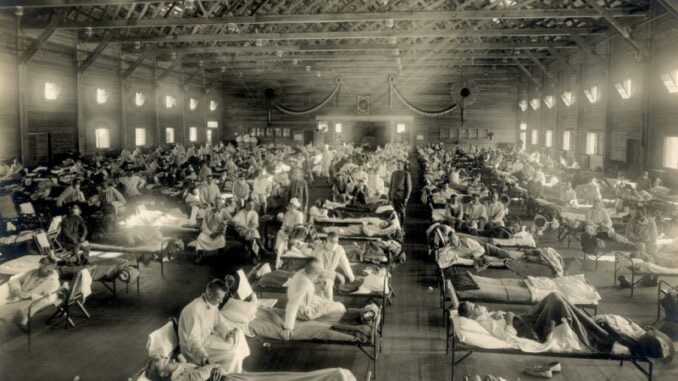Did a Vaccine Experiment on U.S. Soldiers Cause the “Spanish Flu”? The 1918-19 bacterial vaccine experiment may have killed 50-100 million people.
The “Spanish Flu” killed an estimated 50-100 million people during a pandemic 1918-19. What if the story we have been told about this pandemic isn’t true? What if, instead, the killer infection was neither the flu nor Spanish in origin?
Newly analyzed documents reveal that the “Spanish Flu” may have been a military vaccine experiment gone awry.
In looking back on the 100th anniversary of the end of World War I, we need to delve deeper to solve this mystery.
Summary
- The reason modern technology has not been able to pinpoint the killer influenza strain from this pandemic is because influenza was not the killer.
- More soldiers died during WWI from disease than from bullets.
- The pandemic was not flu. An estimated 95% (or higher) of the deaths were caused by bacterial pneumonia, not influenza/a virus.
- The pandemic was not Spanish. The first cases of bacterial pneumonia in 1918 trace back to a military base in Fort Riley, Kansas.
- From January 21 – June 4, 1918, an experimental bacterial meningitis vaccine cultured in horses by the Rockefeller Institute for Medical Research in New York was injected into soldiers at Fort Riley.
- During the remainder of 1918 as those soldiers – often living and traveling under poor sanitary conditions – were sent to Europe to fight, they spread bacteria at every stop between Kansas and the frontline trenches in France.
- One study describes soldiers “with active infections (who) were aerosolizing the bacteria that colonized their noses and throats, while others—often, in the same “breathing spaces”—were profoundly susceptible to invasion of and rapid spread through their lungs by their own or others’ colonizing bacteria.” (1)
- The “Spanish Flu” attacked healthy people in their prime. Bacterial pneumonia attacks people in their prime. Flu attacks the young, old and immunocompromised.
- When WW1 ended on November 11, 1918, soldiers returned to their home countries and colonial outposts, spreading the killer bacterial pneumonia worldwide.
- During WW1, the Rockefeller Institute also sent the antimeningococcic serum to England, France, Belgium, Italy and other countries, helping spread the epidemic worldwide.
Many people do not realize that disease killed far more soldiers on all sides than machine guns or mustard gas or anything else typically associated with WWI.
I have a personal connection to the Spanish Flu. Among those killed by disease in 1918-19 are members of both of my parents’ families.
On my father’s side, his grandmother Sadie Hoyt died from pneumonia in 1918. Sadie was a Chief Yeoman in the Navy. Her death left my grandmother Rosemary and her sister Anita to be raised by their aunt. Sadie’s sister Marian also joined the Navy. She died from “the influenza” in 1919.
On my mother’s side, two of her father’s sisters died in childhood. All of the family members who died lived in New York City.
I suspect many American families, and many families worldwide, were impacted in similar ways by the mysterious Spanish Flu.


